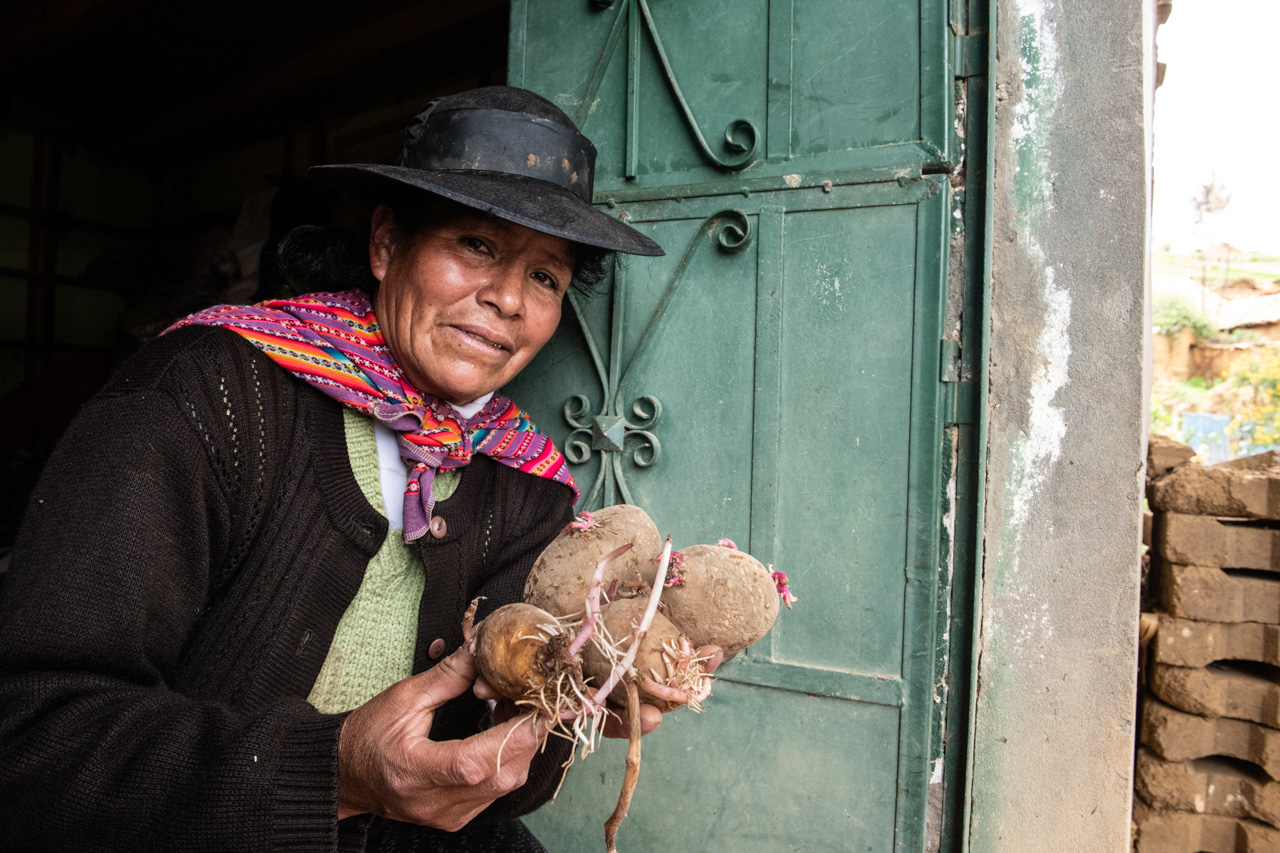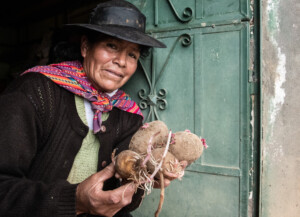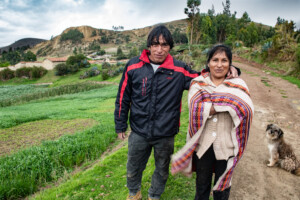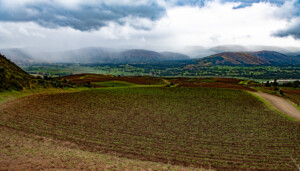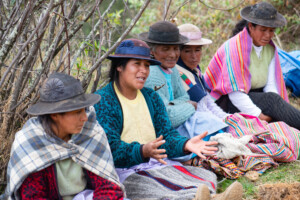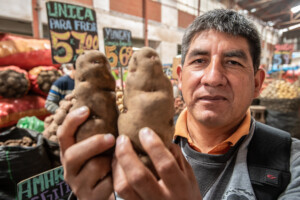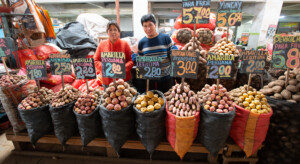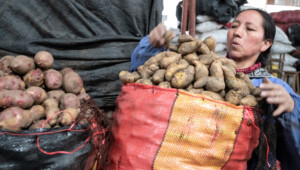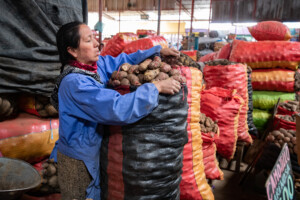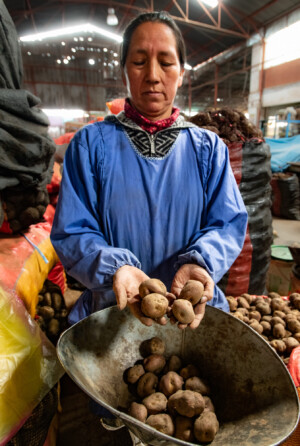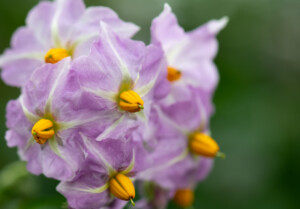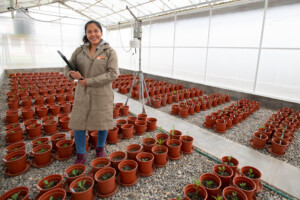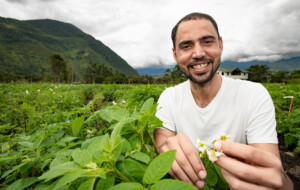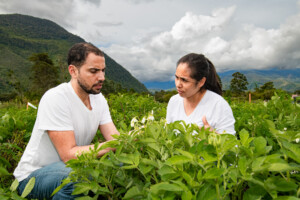A few decades ago, crop breeders would develop new varieties which they thought farmers wanted and then expect farmers to plant those improved seeds. That didn’t work so well because farmers and breeders don’t always think alike. Nowadays good breeders get farmers involved early on in the process of developing new varieties and ask their opinion before the varieties are released.
Our Crop Wild Relatives Project has helped breeders at the International Potato Center develop some climate-smart potatoes. But before the new varieties are released the breeders are asking farmers to plant them and tell us about them.
Today we travelled to meet a group of farmers in highlands of Central Peru. We drove up to about 3800 metres and then hiked down – no way could we walk uphill in that thin air – to a parcel on a hillside where a group of farmers had gathered to meet us. The women told us what they looked for in potatoes and then the men told us their preferences. They are not always the same. We didn’t get too far with our gathering. It started hailing so we all decided to scramble and hike down to the farmers’ village. I was struggling to cover my camera gear and getting soaked and cold. One of the women came up to me and lent me a blue sheet of plastic to cover me.
We got to the village and I was disappointed that I hadn’t seen any potatoes. Maryluz, the woman who lent me the plastic sheet, said she had stored some, so we all went to her storeroom and she showed off some of her potatoes which were just about ready to plant.
All images used on this page were photographed by Michael Major for the Crop Trust and used here under a CC BY-NC-ND 2.0 license.

